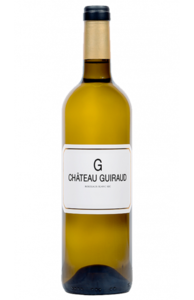Château Latour 2012
Rött vin från Pauillac Bordeaux« James Halliday från Australien hävdade vid ett seminarium i London om jordmånens betydelse att den mest perfekta jordmån han kände till för vinodling var den hos Château Latour. Stora ord visserligen, men det är ingen tillfällighet att Latour är ett av de mest klassiska namnen i vinvärlden. »
| Per flaska: | Per låda: | |
| Pris |
6899kr
|
41394kr
|
| Distrikt | Bordeaux |
| Druvor | Cabernet Sauvignon , Merlot , Petit Verdot |
| Årgång | 2012 |
| Procucenter | Château Latour |
| Artikelnr | 1189 |
| Beställningssortiment | |
| Lagerstatus | |
| Fraktkostnad | 169:- |
| Avnjutes mellan | 2025 - 2055 |
|
Fyllighet |
Fruktsyra |
Strävhet |
Här redovisar och presenterar vi kända vinskribenters utlåtande om specifika viner. Utöver dessa lägger vi in en egen kommentar när vi har provat samma vin.
Robert Parker Wine Advocate
The 2012 Latour is a blend of 90.2% Cabernet Sauvignon, 9.6% Merlot and 0.2% Petit Verdot. Medium to deep garnet colored, the nose slowly, measuredly emerges with notions of preserved Morello cherries, baked blackcurrants and blackberry compote, giving way to nuances of pencil shavings, unsmoked cigars, Chinese five spice and sandalwood plus ever so subtle hints of cardamom and eucalyptus. Medium-bodied, the palate delivers mouth-coating black and red fruit preserves with a firm, grainy-textured frame and fantastic freshness, finishing with a veritable firework display of lingering spices and minerals. This is a more restrained, relatively elegant vintage of Latour that may not have that “iron fist in a velvet glove” power of the greatest vintages but nonetheless struts its superior terroir and behind-the-scenes savoir faire with impressive panache. It is drinking nicely now with suitably rounded-off, approachable tannins, and the tertiary characters are just beginning to bring some more cerebral elements into the compote of temptingly primary black fruits. But, if you’re looking to drink it in full, flamboyant swing, give it another 5-10 years in bottle and drink it over the next 20-25 years+.
Druvor
90.5% Cabernet Sauvignon, 9.5% Merlot & 0.5% Petit Verdot.
Tasting note
The 2012 Latour is a blend of 90.2% Cabernet Sauvignon, 9.6% Merlot and 0.2% Petit Verdot. Medium to deep garnet colored, the nose slowly, measuredly emerges with notions of preserved Morello cherries, baked blackcurrants and blackberry compote, giving way to nuances of pencil shavings, unsmoked cigars, Chinese five spice and sandalwood plus ever so subtle hints of cardamom and eucalyptus. Medium-bodied, the palate delivers mouth-coating black and red fruit preserves with a firm, grainy-textured frame and fantastic freshness, finishing with a veritable firework display of lingering spices and minerals. This is a more restrained, relatively elegant vintage of Latour that may not have that “iron fist in a velvet glove” power of the greatest vintages but nonetheless struts its superior terroir and behind-the-scenes savoir faire with impressive panache. It is drinking nicely now with suitably rounded-off, approachable tannins, and the tertiary characters are just beginning to bring some more cerebral elements into the compote of temptingly primary black fruits. But, if you’re looking to drink it in full, flamboyant swing, give it another 5-10 years in bottle and drink it over the next 20-25 years+.
-
Château Latour left the en primeur system in 2012, so the estate's latest releases are the 2020 Pauillac, 2019 Forts de Latour and 2016 Grand Vin de Latour, which I tasted at the estate with Technical Director Hélène Génin. Certified organic since 2018, most of Latour's historic "Enclos" is being farmed biodynamically these days, and its entirety is now cultivated by horse to minimize soil compaction and preserve intact as many old vines as possible. But the objective, above all, rather than subscribing to any particular theoretical approach, is to treat the vineyard holistically, as a system, within and with nature rather than against it. Winemaking is traditional, with macerations in stainless steel followed by maturation in barrel with rackings every three months and one fining with egg whites. Great attention is paid to the choice of barrels: each lot is tasted and its style defined before it's barreled down in cooperage adapted to that style. But if these methods realize the potential of this great site, what makes Latour's site so great? After all, this isn't the only vineyard to occupy the quaternary gravel terrace that makes its appearance along the banks of the Gironde. When I posed this question, Génin's response was to point to Latour's lenses of blue clay interfingered with and underlying those gravels. It's these pockets of clay in just the right places, Génin contends, that contain the secret to the wine's elegantly muscular power and immense longevity.
Robert Parker Wine Advocate








